Effective Strategies to Control Vole Populations in Yards
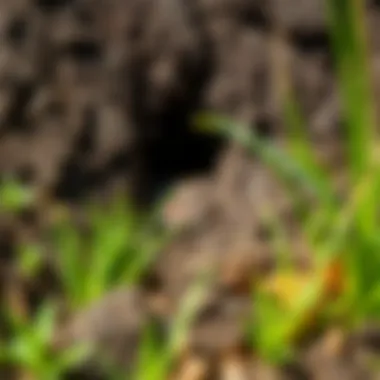
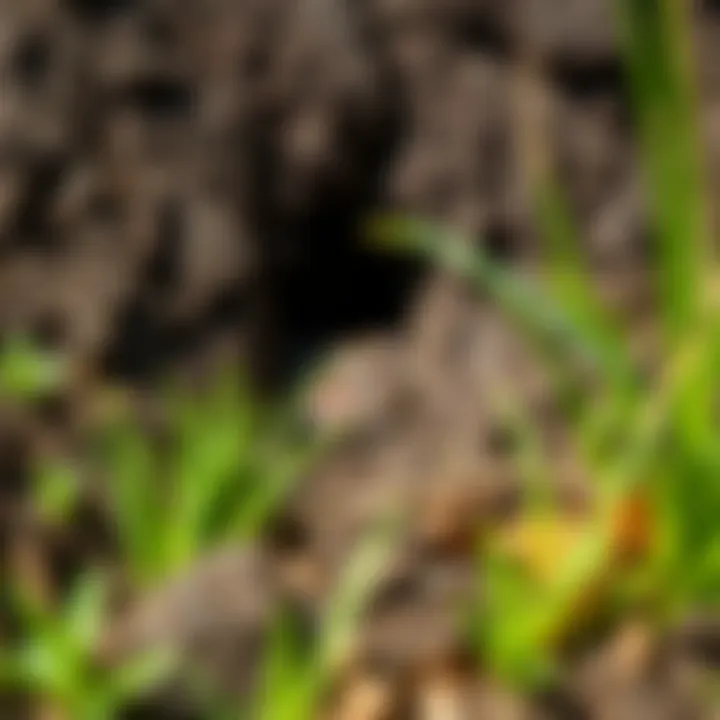
Intro
Dealing with voles in your yard is a challenge many homeowners face. These small rodents, often mistaken for mice due to their similar appearance, can wreak havoc on gardens and lawns. Understanding their behaviors and tendencies is key, allowing you to identify infestations early and take the necessary steps to protect your cherished outdoor space. Throughout this article, we will explore comprehensive strategies aimed at eradicating voles, including prevention techniques, eco-friendly pest control solutions, and more. With a little knowledge and effort, you can reclaim your yard from these pesky intruders.
Understanding Pests
Definition of Pests
Pests are organisms that negatively impact human life, crops, or property. Voles, scientifically known as Microtus, fall into this category due to their propensity to consume tender plants and create unsightly tunnels through lawns and gardens. Understanding voles, their habitats, and behaviors is crucial for effective management.
Importance of Pest Identification
Recognizing voles specifically is essential. Identifying the pest can dictate the response strategy. Voles are different from other garden nuisances. They tend to be mostly active in the early morning or just as the sun sets. Their feeding habits are also unique; voles gnaw on roots and plant stalks, leaving behind distinctive cuttings. According to the University of California Agriculture and Natural Resources, signs of voles often include:
- Surface runways: These pathways in grass or soil show where voles are traveling.
- Burrows: Holes or depressions near plants indicate nesting.
- Gnawed plants: Look for diagonal cuts at the base of plants, a telltale sign of vole activity.
Identifying these signs early on can aid in swiftly implementing control measures to safeguard your yard.
Prevention Techniques
Home and Garden Preventative Measures
Preventing a vole infestation starts with your outdoor environment. Here are a few practical measures:
- Maintain cleanliness: Remove debris and weeds from your garden regularly, as voles find shelter in overgrown areas.
- Proper mulching: Use a coarse mulch rather than fine material to deter voles from burrowing.
- Fencing: Installing wire mesh barriers around your garden may limit access points, but ensure it’s buried a foot deep to prevent tunneling underneath.
Seasonal Prevention Tips
Different seasons call for varied strategies. For example, during autumn, when voles prepare for winter:
- Trim back plants: This reduces potential nesting spots as voles seek shelter.
- Use repellents: Select plant-based repellents that deter voles without harming beneficial creatures.
Understanding that vole populations can fluctuate with the seasons can help in executing timely measures.
Eco-Friendly Pest Control Solutions
Overview of Sustainable Practices
In light of growing environmental concerns, many homeowners seek approaches that don’t just eradicate pests, but do so without damaging the ecosystem. Sustainable practices can include:
- Encouraging natural predators: Owls, hawks, and snakes are natural enemies of voles; thus, creating inviting habitats for these creatures may keep voles in check.
- Companion planting: Interspersing plants that voles dislike, such as garlic or daffodils, among your prized flora can deter them from making a home.
Natural Remedies and Their Effectiveness
Natural remedies offer a way to keep your garden safe while being environmentally conscious. Here are a few options:
- Castor oil: Applying castor oil around the garden can serve as a deterrent, as voles tend to dislike the smell and taste.
- Peppermint: Strong mint scents can repel voles, making planting peppermint around your yard an attractive option.
"Natural remedies might take time to show results, but they tend to be safer for the environment and promote biodiversity."
For additional information on managing garden pests, you can refer to resources like Britannica and University of California Agriculture and Natural Resources.
Understanding Voles: An Overview
Understanding voles is the cornerstone of effectively managing their populations in your yard. These small, burrowing rodents can wreak havoc in gardens and landscapes, making it essential for homeowners to recognize their behaviors and habits. Knowing what voles are, how many species exist, and their role in the ecosystem will equip you with the knowledge needed to address any issues they may present in your outdoor space.
What Are Voles?
Voles belong to the rodent family and are often confused with mice, but they have distinct physical and behavioral characteristics. Typically, voles have a stocky build, short tails, and small eyes. They thrive in habitats that provide ample cover, such as dense grass or shrubbery. Voles are primarily herbivores, feeding on roots, tubers, and seeds, which is why they can frequently be found scuttling through gardens and flower beds.
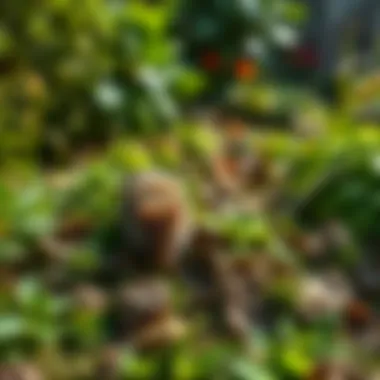

Identifying Different Species of Voles
There are several species of voles, with the meadow vole and the pine vole being the most common in residential areas. The meadow vole can be identified by its slightly larger size and preference for open fields, while the pine vole prefers underground burrows in wooded areas. Understanding the specific species in your area can help tailor your control strategies. Each species exhibits unique behavior patterns that might influence their interactions with your garden. For example, meadow voles are more likely to create surface runways, while pine voles tend to stay underground.
The Role of Voles in the Ecosystem
Voles hold a vital place in the ecosystem. They serve as a food source for a variety of predators, including hawks, owls, and snakes. This interdependence underscores the importance of a balanced natural environment. Though they may be a nuisance when their populations surge, they also contribute to soil aeration and seed dispersal, promoting healthy plant growth. Recognizing their ecological importance should inform your management strategy and encourage you to consider methods that strike a balance between controlling voles and preserving beneficial wildlife.
"Understanding the role of voles is not just about eradication, but finding harmony with nature."
In summary, a comprehensive understanding of voles—from their biological traits to their ecological impact—equips homeowners with the necessary tools for effective management. Knowing not just how to address an infestation, but also the broader implications of vole populations will make your approach to yard care more informed and purposeful.
Signs of Vole Infestation
Recognizing the signs of a vole infestation is crucial for any homeowner looking to maintain a healthy yard. Voles can wreak havoc on gardens and landscaping, so early detection is key to mitigating any potential damage. Not only does spotting these signs allow for timely intervention, but it also helps in understanding the extent of the problem before it spirals out of control.
Being aware of the common indicators of voles can save homeowners from costly repairs and replacement of damaged plants. The faster action is taken, the less likely voles are to establish a stronghold in your yard. Usually, the initial signs are subtle, but with practice, distinguishing them becomes second nature. Below, we’ll dissect the various signs that signal a vole invasion, offering clarity and insight into what to look for.
Recognizing Damage in Your Yard
When it comes to damage caused by voles, understanding the typical patterns can lend a hand in identifying the problem. Unlike moles, voles tend to munch on plant roots, bulbs, and stems, chewed down low to the ground. Homeowners may notice:
- Gnawed Plants: Look for areas of grass, shrubs, or flowers that appear to have been nibbled at. The edges of leaves might be frayed or have clean cuts close to the base.
- Bared Roots: As voles tunnel through the ground, they may expose roots above soil level. This decay could lead to plant death if left unchecked.
- Signs of Feeding: Fresh droppings, often resembling tiny black pellets, might litter the ground near damaged plants. These little markers are telltale signs that voles have been munching in the vicinity.
Recognizing these types of damage early can mean the difference between a simple fix and a full yard restoration.
Tracks and Trails: What to Look For
While in the yard, pay close attention to the tracks and trails voles leave behind. These little critters create specific patterns that can guide homeowners in identifying their presence:
- Runways: Look for distinct paths through grass or vegetation, usually about an inch wide. Voles prefer to travel along edges of gardens, as it provides cover.
- Footprints: If you happen to be prowling around your garden, you may spot tiny hoof-like prints left behind in moist soil. Each print typically measures about a half-inch, often spotted in clusters.
- Displaced Soil: Voles dig shallow tunnels, and in doing so, they push soil up to the surface. If you see areas of dirt that appear out of place, these could be secret vole pathways just waiting to be discovered.
Recognizing trails and tracks can provide crucial insights into when and where voles are most active.
Burrows and Tunnels: Identifying Entrances
The ultimate telltale sign that you’re dealing with voles is the presence of burrows and tunnels in your yard. Though they can be hard to spot at first, these features are significant indicators of voles establishing a home. Here’s what to examine:
- Holes: Look for small openings in well-manicured areas, not larger than two inches in diameter. They often lead to a series of tunnels beneath the surface, serving as living quarters for the voles.
- Entrances: Voles create multiple entries and exits for their burrows, making them nimble. Noticing several holes near one area is a strong indicator of a larger population lurking below.
- Surface Roots: As voles tunnel, they may displace some of the soil, which can lead to exposed roots and a change in the landscape’s texture.
Familiarizing yourself with these signs not only prepares you for a possible infestation but also helps in creating a proactive plan for eradicating voles if they decide to make your yard their home.
"An ounce of prevention is worth a pound of cure." Understanding these signs can provide the advantage needed to keep your yard vole-free.
Overall, homeowners must keep a keen eye for these initial indicators. They pave the way for a healthier garden and a head start on controlling unwanted guests.
Effective Control Methods for Voles
Effective control methods for voles not only target the immediate problems these pests create but also contribute to long-term solutions. Implementing a variety of techniques can ensure that voles aren't just removed from your yard, but also deterred from returning. The effectiveness of these methods often hinges on understanding vole behavior, selecting appropriate strategies, and balancing humane practices with practicality. Each approach offers unique benefits and learning how to integrate these can help you reclaim your garden space.
Trapping Techniques
Types of Traps Available
When it comes to battling voles, traps are often the frontline of defense. There are two main types of traps: snap traps and live traps. Snap traps kill voles quickly, which can be seen as a more immediate solution. They are typically larger, feature a bait area, and trigger mechanism that swiftly ends the life of the small rodent. On the other hand, live traps capture voles without inflicting harm, allowing you to release them far from your property. Both types have clear benefits; snap traps can provide quick results, whereas live traps offer a more humane approach. Plus, they are often reusable, contributing to sustainability. However, snap traps may pose risks to non-target species, whereas live traps require more diligence for proper disposal.
Setting Traps: Best Practices
Setting traps sounds simple, but there’s a certain finesse to it. To maximize effectiveness, place traps in areas where you’ve observed vole activity, like near burrows or along established trails. If using snap traps, ensure that they are positioned perpendicular to the path the voles take to trigger them effectively. Baiting is crucial; peanut butter or apple slices can draw these little pests in. Be mindful to avoid human scents on the traps, as voles might shy away from unfamiliar odors. This practical approach turns the tables in your favor, increasing the likelihood of successful captures. A well-placed trap can make a world of difference, boosting your chances of removing voles swiftly.
Safety Considerations
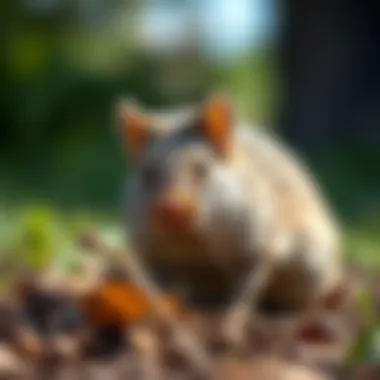
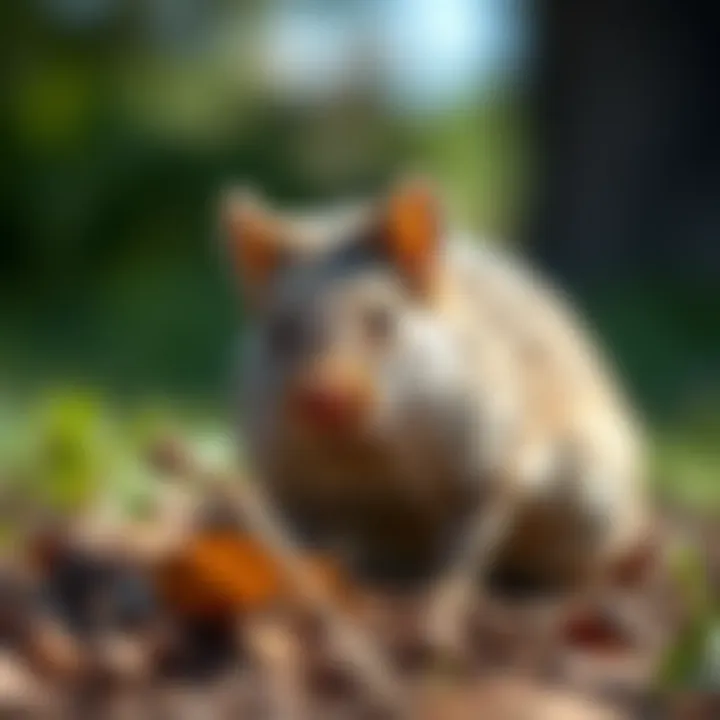
Whenever dealing with traps, safety must always be top of mind. It’s essential to think about not just your family’s safety, but also pets and the environment. If using snap traps, ensure they are securely placed out of reach of pets or children. On the other hand, live traps should be checked frequently to prevent distress to captured animals. Additionally, ensure that any used chemical baits do not bleed into the surrounding area, as this can have dire consequences for local wildlife. Ultimately, being conscientious about safety enhances your pest control strategies and protects your yard from unintended harm.
Repellents: Chemical and Natural Options
How Chemical Repellents Work
Chemical repellents, often marketed as a quick fix, operate on the principle of making the landscape less appealing for voles. They typically emit strong odors or contain ingredients that are unpleasant to these rodents, effectively driving them away. Products containing castor oil or predator urine can make a yard smell uninviting. However, the efficacy of these chemical solutions can vary widely; some users find them effective at deterring voles, while others express skepticism. As a note, regular reapplication may be necessary, especially during wet weather. This could add an extra chore on your plate, but many swear by the effectiveness of these repellents, especially when paired with other strategies.
Natural Repellent Strategies
Turning to natural methods, you might consider using herbs like mint or garlic, known for their pungent aromas that voles tend to avoid. Planting these around the perimeter of your garden could act as a sort of green fortress. Furthermore, certain essential oils can also repel voles; for instance, peppermint oil has been particularly noted for its effectiveness. This choice can be particularly attractive for those wanting a chemical-free solution that also enhances garden aesthetics. Just keep in mind that while they may work, results can be somewhat inconsistent, and effectiveness highly depends on local conditions.
Effectiveness of Various Repellents
When assessing the effectiveness of different repellents, it’s crucial to weigh both chemical and natural options. Chemical repellents, with their potent formulations, tend to provide quicker results, but come with concerns around environmental impact. Natural repellents, while safer, might require larger quantities or frequent reapplication, yielding inconsistent results. Gaging your commitment to either approach will help you choose a suitable pathway. Consider your personal values regarding wildlife, health, and the environment when making this decision.
Biological Control Methods
Utilizing Natural Predators
An often-overlooked strategy in dealing with voles is employing their natural predators. Birds of prey, like hawks and owls, can be formidable hunters of voles. Encouraging these birds in your yard or simply maintaining an environment where they feel secure can help keep vole populations in check. This encourages a more balanced ecosystem, where natural controls reduce reliance on traps and chemicals. However, this method requires patience; it might take time for predators to discover and take note of the vole presence. But once established, they can serve as an effective natural population control.
Encouraging Beneficial Wildlife
Besides raptors, various wildlife like foxes or weasels are also effective at controlling vole numbers. Creating a wildlife-friendly space can invite these beneficial species into your yard. By planting native shrubs and providing sheltering areas, you can attract wildlife that preys on voles. The bonus? You’ll find that having a diverse ecosystem contributes positively to your garden's health in various ways. The downside is that while encouraging wildlife can assist with pest control, it might also invite some undesired species. That’s a risk worth weighing, based on your specific yard setup and goals.
Preventing Future Infestations
When it comes to managing vole populations, taking proactive steps can be just as crucial as the methods used for their immediate control. Preventing future infestations not only protects your property but also saves you time, effort, and money in the long run. A well-maintained yard, combined with thoughtful strategies, creates an environment that is less inviting to these persistent rodents. By being proactive, homeowners can reduce the chances of a return visit from voles, helping you maintain the lush garden you’ve worked hard to cultivate.
Yard Maintenance Practices
Keeping Vegetation Trimmed
Keeping vegetation trimmed is often overlooked yet plays a pivotal role in deterring voles. Tall grass, dense shrubs, and unruly plants create perfect hiding spots for voles. When you keep your vegetation well-maintained, you significantly reduce cover that voles prefer to hide in. A neatly trimmed yard not only looks better but also minimizes the chances of these pesky critters setting up camp.
Here’s a food for thought—regular trimming makes your yard a less appealing habitat. Freshly trimmed grass signals that the area is maintained, possibly making voles hesitant to invade. This practice is beneficial because it maintains an open layout that allows for easier monitoring of signs of infestation.
On the downside, overzealous trimming can risk damaging desirable plants if not done carefully. But with a systematic approach, keeping vegetation trimmed stands out as a simple yet effective preventative measure.
Managing Waste and Debris
Managing waste and debris is a key aspect of reducing vole attractants. Piles of debris, unkempt garden leftover, or even certain compost areas can easily invite unwanted guests. Voles are scavengers at heart, and they thrive in environments where food and shelter are readily available.
When you keep your garden tidy, it discourages voles from rummaging through your waste for a meal. After all, a clean yard is a resource for thriving plants, not for hungry rodents. By routinely cleaning up fallen fruits, eliminating excess mulch, and removing dead plants, you greatly enhance your yard's defenses.
While managing waste isn’t necessarily difficult, it does require consistency. Ignoring this aspect might lead to a familiar pattern—where voles find a feast instead of being shown the door. In stark contrast, maintaining a tidy space could decrease the appeal of your yard, making it a poor target for infestation.
Creating Physical Barriers
Fencing Solutions
Implementing fencing solutions is a fantastic way to physically block voles from entering your garden. Wire mesh or hardware cloth fencing placed underground can serve as an effective barrier against these voracious creatures. The key characteristic of this method is that it provides a tangible defense mechanism.
Fencing is popular because it not only blocks voles but can deter other pest animals as well. By burying the bottom of the fence at least six inches underground, you'll make it harder for voles to dig their way in. However, be mindful that using a fence requires an initial investment of time and money to set up.
An advantage here is that once firmed in place, a good fence needs minimal upkeep compared to other methods like repellents or traps. Still, the trade-off is the possible need to monitor for wear or damage over time. Yet, a solid fence can be a dependable and long-lasting solution to impede future vole invasions.
Underground Barriers
Similar to fencing, underground barriers can help secure your garden from voles. These barriers can be made from various materials, such as buried cement blocks or plastic sheeting. The element of digging deeper into the soil to create a barrier is a critical characteristic that underscores their effectiveness.


This method effectively denies voles the chance to tunnel into fertile ground. An underground barrier can be perceived as a less visible solution, keeping the aesthetic while still fortifying the garden against infestation. Furthermore, this option is beneficial in areas where above-ground fencing might not fit well with the landscape design.
To consider some downsides, establishing underground barriers requires thorough planning and potentially more labor than just setting up a fence. Still, when done right, it offers a clandestine safeguard that will provide peace of mind against future invasions.
Planting Strategies to Deter Voles
Choosing Resistant Plants
Choosing resistant plants is a clever strategy if you’re looking to deter voles naturally. Certain species are known to be less appealing to these rodents due to their strong scents or tough textures. Incorporating these plants into your garden can deter voles from approaching your prized blooms and veggies.
When you opt for resistant varieties, it’s akin to giving voles a clear message: "Your culinary prowess isn’t welcome here!" This choice not only protects gardens but can also add diversity to your landscape. While the implementation may involve selecting the right plants, and potentially switching out what you currently grow, it can be a rewarding investment in the overall health of your garden.
However, it's important to remember that while resistant plants can lend a hand, they don't render a garden invulnerable. Combining this strategy with others mentioned will enhance its effectiveness.
Using Deterrent Plants in Your Landscape
Incorporating deterrent plants into your landscape adds another layer of protection against voles. Certain flowers and herbs—like marigolds or lavender—are known to repel these pests due to their strong aromas. The key characteristic of this method is its dual capability to both beautify your garden and discourage voles.
Using these plants is popular because it promotes a more eco-friendly approach. They not only give your garden added flair but also send voles packing. While it may not eliminate the issue entirely, it can minimize the chances of attracting these unwelcome guests.
The downside? It requires careful planning and consideration of how the plants fit into the overall design of your garden. But all things considered, leveraging nature as an ally against voles offers an elegant solution that blends function with aesthetics.
Legal and Ethical Considerations
Understanding the legal and ethical implications of vole management in your yard is more important than it might seem at first glance. Taking action against these small rodents isn’t just about protecting your garden; it involves navigating local regulations and considering the broader impact on wildlife and the environment. Ignoring these aspects could lead to legal ramifications or unintended consequences that come back to bite you, so to speak.
Local Regulations on Pest Control
Each locality has guidellines on pest control that can vary significantly. Some areas might encourage certain pest management practices, while in others, these actions might require permits or could be outright prohibited. It's essential to familiarize yourself with your local regulations before taking matters into your own hands. Not following these rules could lead to fines or even create a hostile environment for beneficial species.
Local authorities often post this information on official government websites. Here’s a quick tip: search for your city or county’s pest control guidelines online, as many *.gov sites give clear directions on what is allowed and what isn’t.
Ethics of Pest Management
When it comes to eradicating voles, ethics can feel murky. The tussle between protecting one’s property and maintaining a healthy ecosystem gives rise to various ethically concerned opinions.
Balancing Human and Wildlife Needs
Striking a balance between human and wildlife needs is crucial. On one hand, homeowners want to protect their botanical investments, but on the other hand, voles are part of a larger ecosystem that includes predators such as owls and hawks. Therefore, taking a holistic view of pest management is advisable.
The unique notion in balancing both needs is that it promotes coexistence. By setting traps in a way that doesn’t harm other wildlife, or by using deterrents that don’t have lethal outcomes, you can manage your vole population while remaining considerate of other organisms. This ethical approach minimizes collateral damage, making it a favorable choice for those who care about sustainability.
Sustainable Practices to Consider
Sustainable practices are increasingly vital in discussions related to pest management. Implementing eco-friendly strategies can significantly contribute to the overall goal of eradicating voles while protecting the environment.
What makes sustainable practices so impactful is that they not only address the current vole issue but also work towards preventing future infestations. By using native plants that deter voles, for instance, you not only make your yard less attractive to these rodents but also support local wildlife. The key advantage here is sustainability, allowing you to keep your garden healthy without relying on chemical interventions, which can be harmful.
In summary, paying heed to legal and ethical considerations in rodent management can not only spare you from regulatory trouble but also contribute positively to the environment. Taking the time to understand these complex dynamics equips you with the tools needed to foster a healthier coexistence with local wildlife.
Epilogue
In wrapping up the discussion on managing vole populations in your yard, it is crucial to reflect on the importance of the strategies covered throughout the article. Voles can wreak havoc on gardens, landscapes, and even fruit trees. Thus, understanding how to effectively confront this challenge is essential for maintaining a healthy and thriving outdoor space.
Summarizing Effective Strategies
To combat the nuisance of voles, homeowners can employ a variety of strategies that blend immediate action with long-term prevention. Here’s a concise rundown:
- Trapping: Using traps is one of the most straightforward ways to catch voles. It’s important to position them in places where youve seen signs of activity, such as near burrows or along their trails. Different types of traps each have their advantages, so familiarize yourself with options like snap traps or live traps to find what works best in your situation.
- Repellents: Both chemical and natural repellents can deter voles from your yard. Chemical options could include substances that are specifically formulated to ward off these rodents. Meanwhile, natural repellents like castor oil or even plants with strong scents, like garlic, can also yield results without the use of harsh chemicals.
- Biological Control: Encouraging natural predators such as owls, hawks, and snakes can help bring voles under control without direct intervention. Creating a habitat that attracts these creatures may go a long way in reducing your vole population.
- Yard Maintenance: Keeping your yard tidy plays a significant role in prevention. Trimmed vegetation can deter voles, as they prefer dense, overgrown areas. Equally, managing debris and waste can remove potential nesting spaces for these rodent pests.
- Barriers and Planting: Creating physical barriers, such as fences, or planting resistant varieties of plants can limit how voles invade your garden. Choosing specific plants that are known to be less appealing to voles is a proactive measure
The Importance of Ongoing Monitoring
Ultimately, managing voles is an ongoing process. Once you’ve taken steps to eradicate them, it’s vital to monitor the situation regularly. Checking for signs of new burrows or damage to plants can help catch any infestations early on. By staying vigilant, you're not only protecting your current investments but also ensuring that your yard remains an inviting space for both you and the wildlife that benefit from your careful stewardship.
Regularly assessing your yard will also give you peace of mind. If the signs of voles return, you'll be armed with knowledge from your earlier experiences on how to act swiftly.
As a final thought, taking measures against voles and maintaining a beautiful yard is not just about aesthetics; it’s about nurturing your connection with nature while keeping your peace of mind. A well-maintained yard is a reflection of a thoughtful and proactive approach to gardening and wildlife management.



